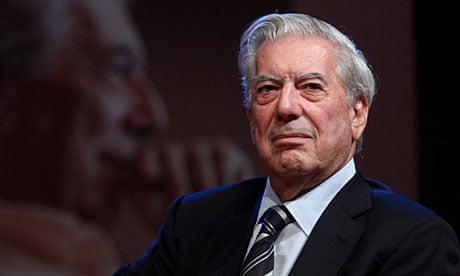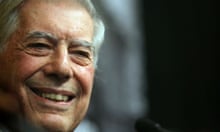The Time of the Hero (1963)
Vargas Llosa's first novel, published in Spanish as La Ciudad y Los Perros (The City and the Dogs), is set in a military academy in Peru, the Leoncio Prado Academy, which the author himself attended. When published, it caused such a stir that the academy's authorities burned 1,000 copies of the book in protest. The novel explores army codes and strict military hierachy, telling of a group of young cadets struggling to survive in a bullying and violent environment, a situation eventually leading to the murder of one of their number. The book was later filmed by Peruvian director Francisco Lombardi.
Aunt Julia and the Scriptwriter (1977)
This comic novel set in 1950s Lima tells of a student and aspiring writer - Marito - who falls in love with his uncle's sister-in-law, 13 years his senior. Marito also befriends a manic Bolivian scriptwriter, who's producing soap operas daily for a local radio station. The plot is loosely based on the story of Vargas Llosa's own first marriage, at the age of 19, to the then 32-year-old Julia Urquidi, who was indeed his aunt by marriage. Urquidi later gave a rather different account of her relationship with Vargas Llosa in a memoir, Lo que Varguitas no dijo (What Little Vargas Didn't Say).
The War of the End of the World (1981)
Hailed as a tragic masterpiece, the novel was inspired by true events in Bahia, Brazil, in the late 19th century. At a time of economic decline following the breakdown of the Empire of Brazil, the poor are drawn to a charismatic preacher, Antonio Conselheiro, who is predicting the end of the world. Condemned by the church, Conselheiro takes his rag-tag band of followers to build a town at Canudos, set to be a new utopia. But Canudos exists in defiance of the national government, and violent conflict ensues when armies are sent to bring the prophet to order.
The Feast of the Goat (2000)
A savage portrait of political tyranny through the story of dictator Rafael Trujillo, "the Goat", whose bloody rule of the Dominican Republic lasted from 1930 until his assassination in 1961. The novel follows the ageing Generalissimo through his last day on earth as his assassins circle, showing him as a grotesque character whose failing body is no bar to his preening machismo. A contrasting narrative strand explores the human impact of Trujillo's evil regime through the story of a woman betrayed in childhood by her father to the dictator's sexual depravity. The damage done by dictatorship is seen to continue after his death, as the effects of the old regime persist. The novel was praised for its vividness but criticised by some as heavy-handed.
The Bad Girl (2006)
Vargas Llosa's most recent novel features Ricardo Slim Somorcio, who, as a teenager in Peru in the 1950s, first meets a poor immigrant girl, Lily, and falls in love. But Lily suddenly disappears. Throughout the subsequent four decades, during which Ricardo works as a translator in various locations in South America and Europe, he keeps re-encountering "the bad girl", who has her eyes set firmly on the pursuit of money and power. Ricardo remains obsessed with her. At each meeting though Lily appears in a radically different disguise, chameleon-like, professing not to know him.






Comments (…)
Sign in or create your Guardian account to join the discussion